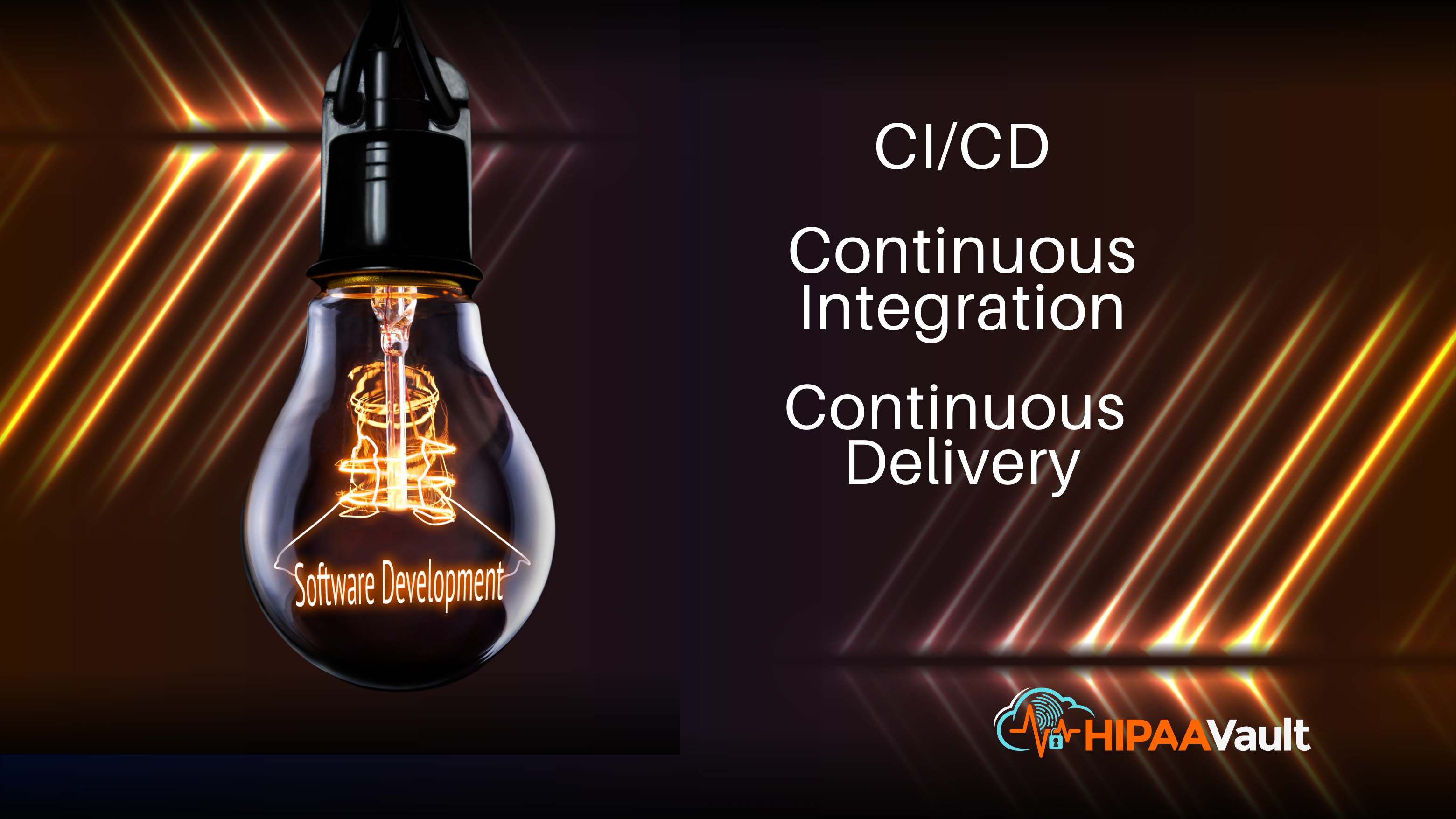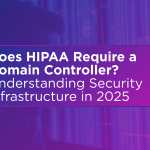
Reliable software has fast become an indispensable tool of healthcare.
Statistics indicate that nearly 90% of healthcare providers currently rely on customized software solutions and development.
For healthcare developers, enabling fast, continuous access to patient data is a key priority; how sensitive patient data will be shared and stored – with an eye toward compliance and informed consent – is also critical.
Above all, privacy and security remain top of mind: any vulnerabilities in the code can be an open door for hackers to target these weaknesses, infiltrate systems, install malware, and steal or ransom sensitive data.
For patients, any system downtime can be catastrophic; studies continue to establish a direct link between delayed treatments from data breaches and increased mortality rates.
A healthcare organization’s viability and reputation are also at stake.
Such concerns prompt the question: Can an effective “pipeline” that monitors and improves the flow of software from the developer to the end-user actually help improve healthcare outcomes?
This is the goal of continuous integration (CI) and continuous delivery (CD).
What is CI/CD?
As it pertains to the field of software development, CI/CD forms the pipeline for streamlining the delivery process (improving “the flow”) while simultaneously instilling a culture of efficiency.
Here’s how it works: Essentially, every time a developer submits code changes to the software repository, the software is automatically built and tested.
This helps ensure that code changes integrate smoothly with the existing codebase, allowing for more rapid roll-out of new software features.
In this way, CI/CD effectively enables DevOps teams to work more efficiently and collaboratively; they can identify and fix issues early in the software development process before they become more expensive to address.
So how does this translate to healthcare?
How CI/CD Helps Healthcare
Out of the gate, CI/CD helps reduce the risk of errors and downtime for critical systems by delivering quality code. This benefits healthcare by providing:
- More efficient deployment – Faster delivery of new or updated software for healthcare providers means that it can be put to work sooner to help patients.
- More reliable, secure code – Utilizing automation in the development process helps reduce human error while promoting compliance. Safer code means safer patients – increasingly valued now that cybersecurity is a recognized patient safety issue.
- More flexibility to adapt – Healthcare delivery needs continue to change and grow; software technologies that can keep pace via more efficient code changes and updates will translate to better patient outcomes and reduced costs.
- More efficient access to advanced technologies – CI/CD supports the efficient development of advanced AI and machine learning systems which can be used to improve diagnosis, patient care, and other critical healthcare functions.
Healthcare App Developers
As the global mHealth apps market continues to expand – projected to reach $639.4 billion by 2028 – the race is on to produce new and innovative apps.
We’ve witnessed the explosion of “healthy lifestyle” and wellness apps for the general public; new smart apps for diet and exercise – even to help track vital health measures like blood pressure, diabetes, sleep patterns, and water consumption – appear regularly.
Healthcare providers themselves increasingly rely on apps to help facilitate their treatments:
- physicians use apps like Mobile PDR for point-of-care prescribing of drugs
- doctors and emergency workers receive timely medical data through mobile apps
- specialists carry essential libraries of textbooks on their devices through apps
- clinics use apps to improve patient experiences and build their brand
With CI/CD, healthcare app developers can generally enjoy faster time to market, with better security and overall performance.
Enhanced security, speed, and quality of software will also include an increased sensitivity about the end-user – essential in an industry where the efficacy of tools employed can affect patient outcomes.
While CI/CD enables faster delivery, exercising care to ensure that safety, privacy, and regulatory compliance requirements are met – particularly if protected health information (PHI) will be handled – is critical.
In such cases, HIPAA security and privacy practices (such as encryption and two-factor authentication) should be applied wherever possible.
As a side note, developers will derive excellent security benefits from packaging their app and its dependencies in a container. A container orchestration tool like Kubernetes, for example, offers excellent resource efficiency, not to mention integrated security benefits.
Configuring containerized apps for protected health information can be complex, however. For example, applying automated scanning of containers at all stages of deployment is just one aspect of keeping images and registries safe from vulnerabilities.
GitHub/GitLab, Google, and CI/CD
Smart developers who embrace CI/CD will rely on tools like web-based Git repositories to help with code management, version control, and collaboration among teams of software developers.
GitHub and GitLab both provide effective platforms for storing and sharing code, tracking changes and issues, and managing project workflows.
GitHub Actions is a feature that allows users to create custom workflows, including automated builds, tests, and deployments, directly within their GitHub repositories.
Google Cloud also provides an impressive suite of CI/CD tools to help healthcare app developers streamline the code delivery process and automate many of the steps involved in testing, building, and deploying applications.
A managed CI/CD platform that automatically compiles source code, runs tests, and produces deployable artifacts is available with Google Cloud Build. Developers can use custom build steps to control the build process and use pre-built Docker images to customize their build environment.
Cloud Build integrates with other Google Cloud services like Container Registry, Kubernetes Engine, and App Engine to provide a complete deployment pipeline.
Another tool, Cloud Code, is an integrated development environment (IDE) plugin that allows developers to develop, debug, and deploy applications directly from within their IDE. Cloud Code supports multiple languages such as Java, Node.js, Go, and Python.
Ultimately, GitHub, GitLab, and Google’s CI/CD tools can help healthcare developers produce high-quality code more efficiently by automating many of the time-consuming and error-prone steps involved in testing, building, and deploying software applications.
Again, we stress that healthcare developers must be careful to comply with HIPAA regulatory requirements. Follow best practices for data privacy and security, especially when using these tools to develop healthcare applications that will handle protected health information (PHI).
How HIPAA Vault Supports CI/CD
As mentioned, medical data needs a secure infrastructure – one built to preserve data integrity, availability, and privacy for HIPAA – in both transit and storage. Providing this compliant infrastructure minimizes risks and liability to data.
Many developers have taken up the “DIY challenge,” only to discover that meeting all the complexities of building a HIPAA-compliant infrastructure can be daunting.
Hundreds of hours later, mounting development costs, ongoing server security concerns, and looming audit requirements take their toll – and they’ve only just begun.
Here’s where inheriting a proven, fully-managed infrastructure with cutting-edge security, can save the day.
With HIPAA Vault, you’ll get your healthcare app up and running fast and increase your profitability – without the expensive server equipment and maintenance costs – while you leave the day-to-day security, patching, and updates in the hands of proven security specialists who know HIPAA.
We’re here to help you “continuously integrate” your important innovations and updates and “continuously deliver” them into reliable, secure software that can lead to greater customer satisfaction – whether for smaller projects or enterprise applications.
If you have any questions about how we can assist your development process, please give us a call! 760-615-0612





